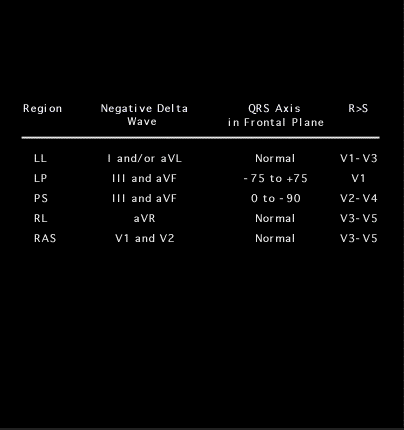
[WILL HAVE TO BE REDONE BUT NOT YET SURE HOW] The location of the bypass tract can be predicted with reasonable accuracy from the charactristics of the delta wave and the QRS complex and several somewhat complicated schemes having multiple steps have been published (see Arruda et al J Cardiovasc Electrophysiol. 9:2, 1998) A more simplified approach is shown here. It stresses the leads with negative and positive delta waves and unique charactristics of the QRS complex 1) If the bypass tract is located in the left lateral position, the delta wave will be negative or isoelectric in leads 1, aVL and V6 and positive in leads V1 and V2. In addition, the R wave amplitude will usually exceed that of the S wave in leads V1 and V2 2) If the bypass tract is located posteriorly; either left posterior, or paraseptally, the delta wave will be negative in leads II, III and aVF and positive in leads 1, aVL, V5 and V6 3) If the bypass tract is located in the right lateral position, the delta wave will be negative in lead aVR and positive in leads I, II, aVL, V5 and V6. In addition, the QRS complex will resemble left bundle branch block.
